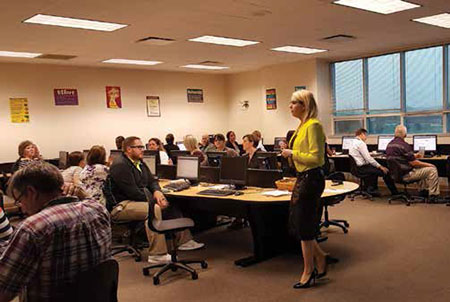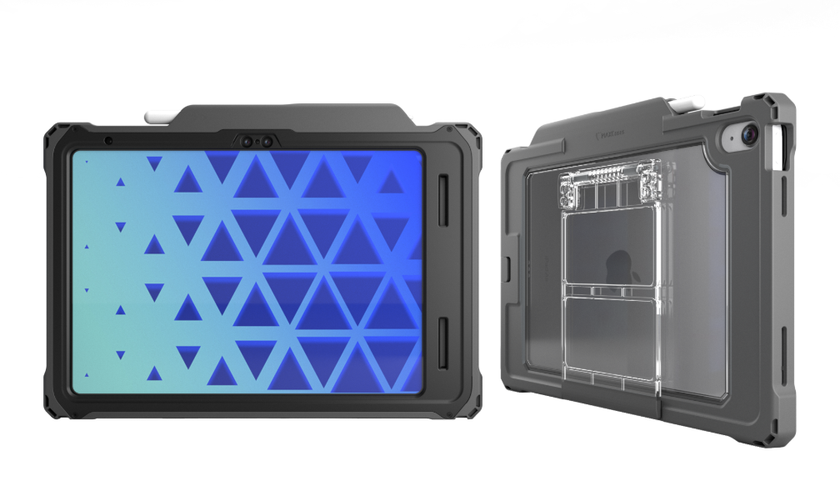USING AN LMS FOR BLENDED LEARNING, PROFESSIONAL DEVELOPMENT, AND ONLINE TEACHING

At the Metropolitan School District of Wayne Township (IN), we offer students a variety of blended and online learning opportunities. The district also administers Indiana’s only public, non-charter virtual high school, Achieve Virtual, which is open to high-school students across the state. Achieve Virtual employs about 60 part-time teachers who have full-time positions in other schools across the district and the state.
Educators in the Metropolitan School District of Wayne County learn ways to expand use of LMS platform for blended and online learning
Because it’s difficult for teachers to be effective online instructors unless they’ve experienced good online learning themselves, I began delivering professional development to our teachers through our LMS, itslearning (now called the Wayne Learning Hub), so I could model good online practices.
First, I set up a course called the Achieve Virtual Teacher Workroom and created self-paced, asynchronous PD modules, employing the same tools teachers use with students (including discussion boards, peer assessments, online surveys, etc.) Almost immediately, teachers began transferring what they learned to their online classrooms. And, in turn, students became increasingly engaged with their lessons and activities.
Online learning can be socially isolating, so I nurtured an online community among the teachers. I encouraged anyone who emailed me a question about online instruction to post the question to our online teacher workroom. The feedback from teachers with similar experiences led to some valuable insights.
Teachers at our night school, Ben Davis Extended Day, wanted to make instruction personalized for their students, who were already working on online courses at their own pace. After researching strategies and ideas, the teachers chose individualized learning plans (ILPs). ILPs are built right into our Wayne Learning Hub, so the platform organizes all the information about students’ competencies, goals, and tasks.
We’ve also rolled out PD ILPs for all of our teachers. The Hub’s ILP creation tool shows the teachers’ professional learning objectives and progress as interactive column charts. The chart’s first column contains school improvement plan goals, and the second column has metrics for individual teachers so we know what progress toward those goals looks like for each teacher. While metrics don’t have to be quantitative, we do need to know how teachers are going to measure success. The third column displays the professional learning tasks that the teacher has selected out of the choices I’ve given them based on their unique interests and needs as learners. I’ve found that choices are good, but too many can be overwhelming. Finding the right balance for your staff is critical.
Keeping the focus on teacher voice, which includes building in regular opportunities for dialogue and reflection, has been critical to the program’s success. Based on teacher feedback, the initiative continues to evolve and grow. Our teachers are participating in synchronous online meetings and completing online mini-courses at their own pace in addition to researching, discussing, and building content for their courses. Now that teachers have experienced blended and personalized learning themselves, we have rich dialogue about what personalization means for students and how we can improve the learning experience.
Michele Eaton is the director of virtual and blended learning for the MSD of Wayne Township in Indianapolis, Indiana. Follow her on Twitter at @micheeaton.
Tech & Learning Newsletter
Tools and ideas to transform education. Sign up below.











